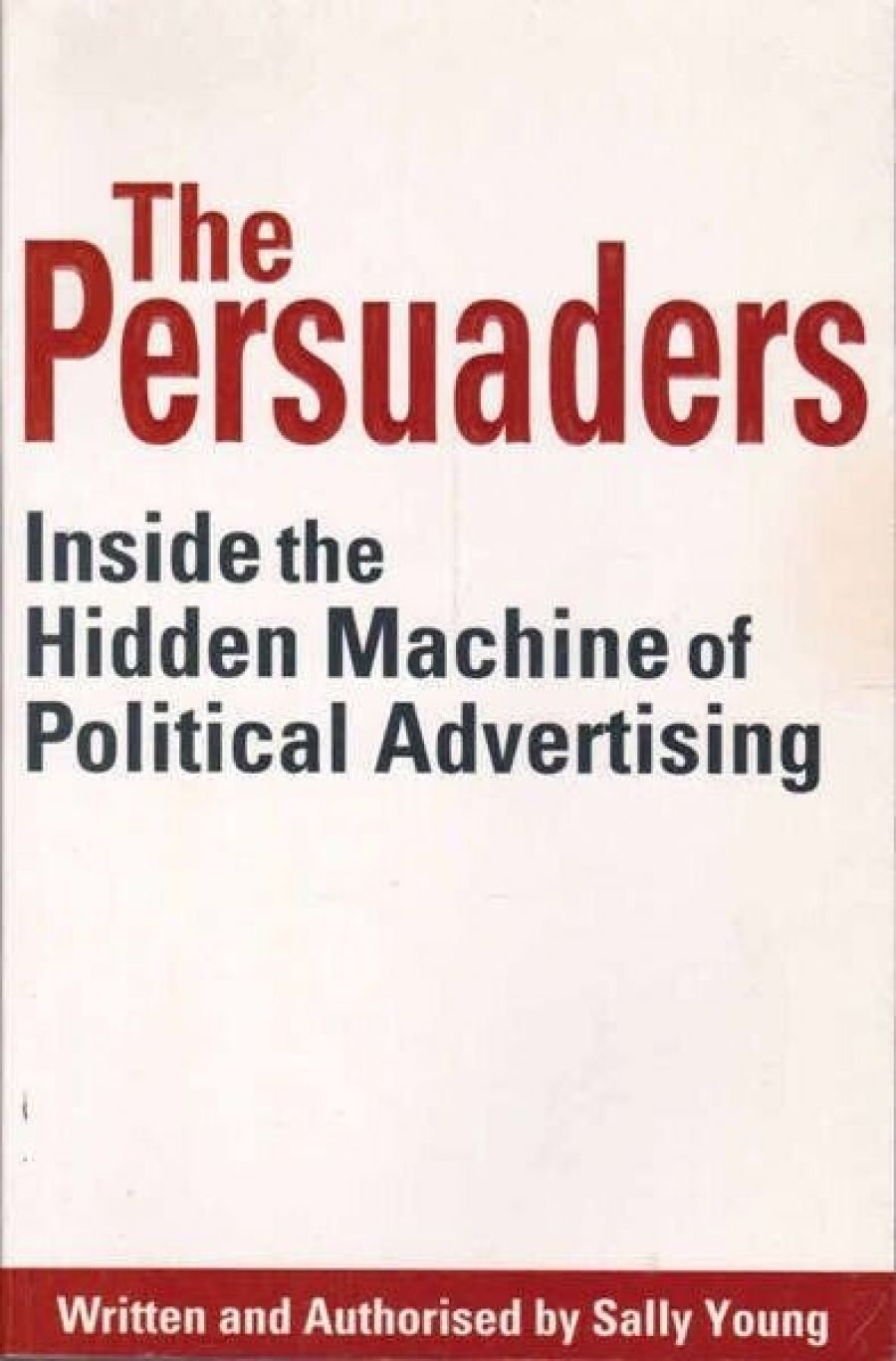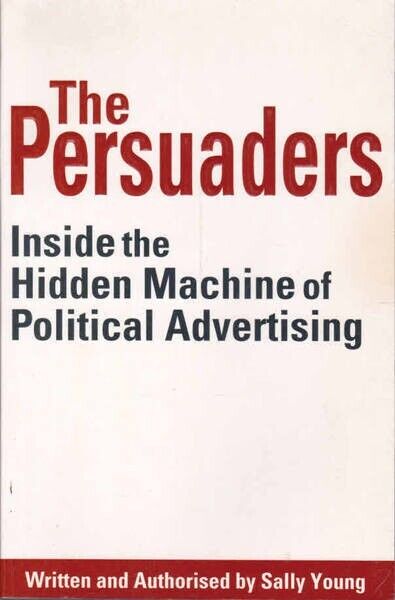
- Free Article: No
- Contents Category: Politics
- Review Article: Yes
- Article Title: Save it for your tombstone
- Online Only: No
- Custom Highlight Text:
In a discussion on election advertising, an American political operative was asked whether it is preferable to run a ‘negative’ advertisement (criticising an opponent) or a ‘positive’ message (extolling the client candidate). He replied: ‘If it’s negative, it works. If it’s positive, save it for your tombstone.’ In Australia, the major political parties are similarly inclined: according to Sally Young’s research, sixty per cent of television advertisements in federal election campaigns since 1993 have been in the ‘negative’ category. The public’s general dislike of politicians facilitates this approach. For the same reason, the advertising party usually employs an actor to dish out the dirt. Young, a political scientist, has extensively researched political advertising in Australia. The Persuaders: Inside the Hidden Machine of Political Advertising covers the evolution of political advertising in this country and the effectiveness (or otherwise) of various campaigns over the last fifty years.
- Book 1 Title: The Persuaders
- Book 1 Subtitle: Inside the hidden machine of political advertising
- Book 1 Biblio: Pluto Press, $34.95 pb, 404 pp
- Book 1 Cover Small (400 x 600):

- Book 1 Cover (800 x 1200):

There are good reasons for closely examining the workings of this system. Political advertising in Australia is among the least regulated in the world. There are no restrictions on the sums the parties may spend on campaign advertising and – apart from the last three days of the campaign, when a ‘blackout’ applies – no restrictions on the frequency with which they may advertise. (A statute restricting electronic advertising before federal elections was struck down by the High Court in 1992.) The author warns that this is taking us down the path of American-style money politics. Certainly, the escalating cost of campaigns (the major parties spent at least $30 million during the 2001 election) provides some evidence of such a trend.
The campaign is, however, only part of the story. The Persuaders makes it clear that advertisements conducted during the official election campaign represent only a fraction of those that should properly be classified as ‘political’. The reader gains the impression that we are living not only in the age of the ‘permanent campaign’ but also in the age of the permanent advertisement.
The evidence is damning. In the election year of 2001, the federal government spent more than $140 million on advertising, including nearly $80 million on ‘public education campaigns’ in the six months leading up to the election. As many of the policies being promoted did not require the public to take any action (‘You do not have to do anything to claim your money … it will be paid automatically into your bank account …’), the expensive advertisements were of little utility, other than ‘warming up’ the voters before polling day. No doubt the media moguls were also feeling warm.
Public funds are also spent liberally on politicians’ own election campaigns. Introduced in 1984 as a means of lessening the major parties’ reliance on corporate donations (and possible corrupt influence), the system of public election funding had the opposite effect, since no restrictions were placed on the amount that could be spent on advertising. Costs skyrocketed, making the parties as reliant as ever on ‘the big end of town’. After the 2001 election (the most recent covered by the book), the ALP and Coalition parties received more than $32 million of public money between them (a figure that rose to more than $34 million in 2004, according to the Australian Electoral Commission). Corporate donations remained healthy: in 2002–03 the ALP and Coalition parties received combined donations of more than $76 million.
As if these benefits were insufficient, members of parliament also receive an annual printing allowance of $125,000. The allowance did not constrain at least seventeen parliamentarians in the lead-up to the 2001 election, who each spent more than $210,000 on printing.
It is difficult to rebut the author’s opinion that our political leaders have created a ‘cosy club’ for themselves. One might go further by suggesting that the distinction between political interest and the public interest has broken down. This impression is not assisted by the fact that so many of the politicians’ advantages are untrammelled by regulations or other laws. The numerous promotional benefits enjoyed by MPs, as well as the huge sums spent on traditional campaign advertisements, provide incumbents with a powerful advantage that may well, as the author contends, alter ‘the level playing field upon which our democracy depends’. One hopes that the author in her academic capacity (or a colleague) will undertake further research to test this hypothesis: direct evidence of a ‘chilling effect’ might provide a strong impetus for winding back the excesses of the industry.
There have been some hopeful signs. The ALP’s successful push to curb the outrageous superannuation benefits enjoyed by federal MPs demonstrated that reform is not only possible but may also be attractive to electors. One ‘benefit’ of the Pauline Hanson episode was its demonstration that the media-managed domination of the major parties can be circumvented by a candidate with strong convictions and a public appeal sufficient to attract the crucial ‘free advertising’ of commercial news coverage. While Hanson’s policies were distasteful, her electoral success leaves one hopeful of a more liberal independent making a run for office.
The Persuaders is a shocking indictment of our political leadership. It reveals all of the shady practices that have been going on in the political backrooms for more than a decade. Lively and direct, the author writes in a clear style with an informative emphasis. The book will appeal to a wide readership, and deserves one.


Comments powered by CComment